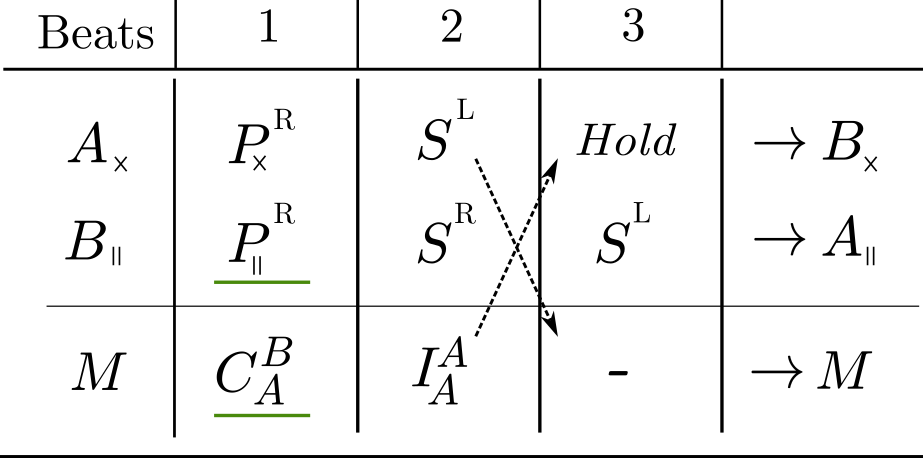‘Catch the carrot’ is an easy pattern with a short sequence, which makes it very beginner-friendly.
It is a three-person manipulation pattern based on a Jim’s 3-count.
If you are not familiar with the take-out element ‘The Pop’, you can learn it here as preparation for the pattern:
https://passing.zone/the-pop/
In a standard Jim’s 3-count, one passer (e.g. Juggler A) throws a pass cross instead of straight. This causes the receiver of the pass ( Juggler B) to throw at two consecutive beats with the same hand (e.g. right-handed pass is followed by a right-handed self). We call this a “hurry”.

In “Catch the Carrot” we do not feel this effect since the pass is carried by the manipulator.
This pattern is ambidextrous, meaning the left and right hands change after six beats. We indicate this by A’, B’ and C’.
A total round consists therefore of 12 beats.
But since a juggler is never juggling the full sequence without being replaced by M, it will feel more like 4 parts, which is not directly visible in the table:
1) one part with a left-handed pass on the crossing side
2) one part with a left-handed pass on the straight side
3) one part with a right-handed pass on the crossing side
4) one part with a right-handed pass on the straight side
The pattern has one magic club, which is always a pass.
Two other colour-coded clubs (the carrots) stay on their sides and are never thrown as passes. They are intercepted through a pop.
When the manipulator brings the club, they must carry the “inner” club. Otherwise, you mess up the colour code.
You can see one possible start, preserving the colour code, in the picture below.
Notes for Notation-Nerds:
This pattern actually just consists of three beats. Meaning on beat 4-6 juggler A does the same throws as Juggler B did at beat 1-3. However, the former straight pass of Juggler B is now thrown as a cross pass.
Technically we could write the pattern as follows:

So we would re-label after three beats while swapping straight with cross passes and vice versa.
Note that in this short notation, the indicator for swapping R and L is no longer included.
Therefore, we preferred the longer notation over 6 beats, even if including quasi-redundant information.